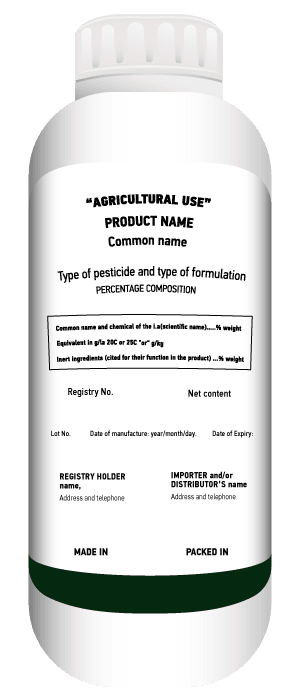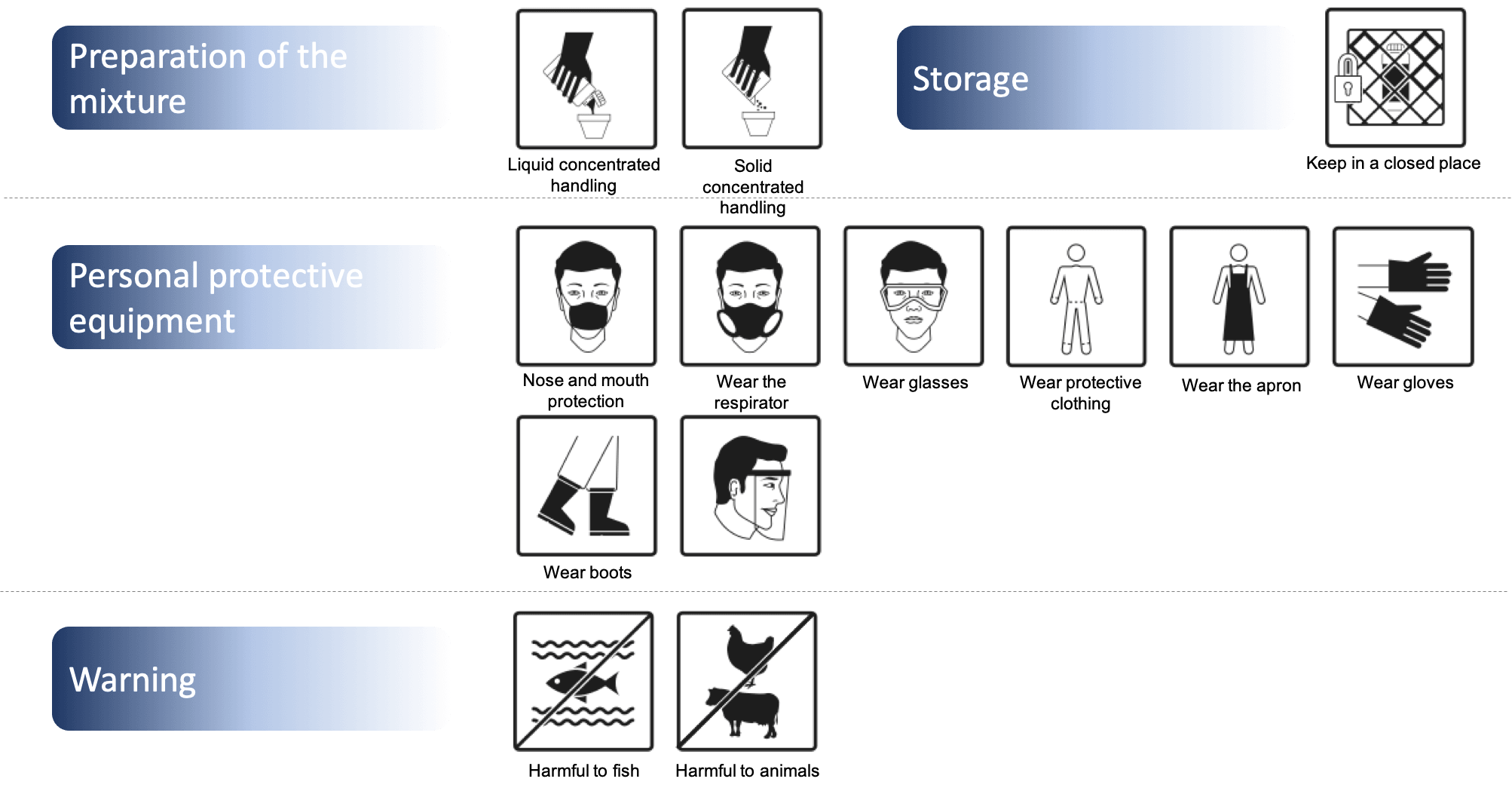I do read the labels and safety sheets of the pesticides or phytosanitary

As recommendations for use in the boxes of medicines allow us to know the doses, care and restrictions that we must have when consuming them, labels and safety sheets of plant protection products inform us about the responsible usage of the product, the care and precautions that we must have when handling, applying, storing or transporting them.
That is why reading labels and safety sheets is not only necessary. It is mandatory and one of the Good Agricultural Practices that must be followed when using a phytosanitary. This simple step approaches us to guarantee the correct handling of the product, the application for the control of pest or disease fully identified, in the appropriate dose and the safety of the applicator and the environment, without unnecessary risks, as development of resistance and contamination.
At what time should I read the labels and safety sheets?
These two elements that are part of each phytosanitary product or pesticide must be read in five moments:
- When the product is purchased.
- At the time of storage.
- During the mixing or preparation process and before applying it.
- At the moment of disposing its empty container.
Make sure you always read the label and the instructions found on the safety sheet, because in doing so you will respect the indications they contain for pre-consumption, consumption and post-consumption. This good practice will guarantee the safe and responsible use of phytosanitary products.
What information will you find on the label of phytosanitary products or pesticides?
By international and national standards, phytosanitary products, crop protection or pesticides for agricultural, domestic and public health use must have a label and a safety sheet with essential information such as:

- Manufacturer identification.
- This product can generate risks. Remember that for being a toxic product, pesticides must be handled with caution to manage risks.
- Safety measures in case of an emergency or accident (contact telephone numbers and medical recommendations).
- The formulation, composition and concentration of the product.
- The expiration date.
- The registration number of the product. This is the sale permit or authorization granted by the responsible national authority.
- Recommendations for the application.
- The personal protection elements (PPE) that must be used before, during and after the application. You can also check out the video Learn with Custodian: Personal Protective Equipment
- The grace period and the re-entry period (Deficiency period refers to the minimum time that must pass from the last application made until the day of harvest.) On the other hand, the re-entry period is the minimum period that must elapse, so that a worker can enter the treated lot after the product application).
- Care regarding the proper final disposal of the empty container.
- Warnings regarding the use of the product.
- Pictograms that indicate the care that must be taken before, during and after using the product for an application.
This section shows the toxicological band of the product (red, yellow, blue or green).

Recommended Video: Phytosanitary product labels (Argentina)
What information will you find in the safety sheet for plant protection products?
The safety sheets are a document that accompanies each of the phytosanitary products. They are developed directly by the manufacturers because they are the ones who know all the chemical components of the product first hand, and unlike the label, these documents include more specific and extensive information on the composition, hazards and actions to take, in case of emergencies. Below, you will find the list of information that makes up a safety sheet:
- What is the product and who makes it (manufacturer).
- The potential dangers that this product can generate. Remember that for being a toxic product, pesticides must be handled with caution to manage risks.
- The composition and information on the active and inert ingredients of the pesticide.
- Mix order with other pesticides for proper suspension (powders, emulsifiables, etc.).
- First aid measures such as antidotes, procedures, contraindications or notes for doctors.
Recommended unloading: Post first aid procedure in case of contamination by pesticide
- The measures that must be taken in the event of a fire.
- The measures to be taken in case of spillage or accidental spillage. How to clean or absorb the product in case of leakage or spillage.
- What are the proper practices for handling and storage, in addition to the hygiene conditions and the precautions that must be taken?
- What are the parameters and limits of exposure to the product, in addition to the personal protection that must be taken at the time of handling?
- The physical and chemical properties of the phytosanitary.
- The stability and reactivity of the product with respect to environmental conditions (pressure, temperature, storage).
- Toxicological information.
- The eco-toxicological information
- The considerations of disposal and use, since according to each country or city, the product must be governed by a regulation.
- Dose per hectare, mode of action, crops for which its use is recommended, pests that it controls, frequency or period between applications, phytotoxicity, compatibility.
- Information on the product transport.
- Information on regulations in health, safety and environment.
- Additional information that may be useful or as a complement to the information registered on the label.
Recommended: Get to know here some examples of the safety sheets of phytosanitary products in Chile

By implementing Good Agricultural Practices (GAP) we will take care of our crops, health and the environment.
Biography:















